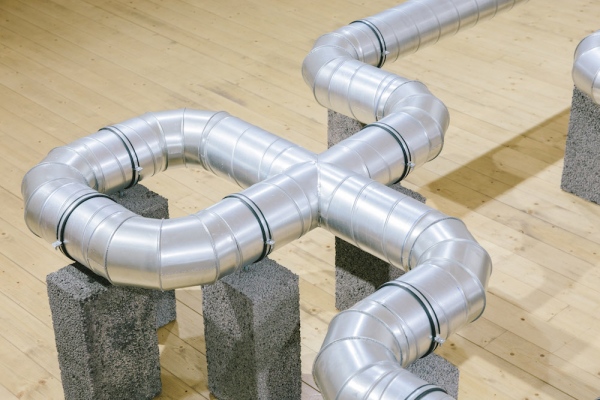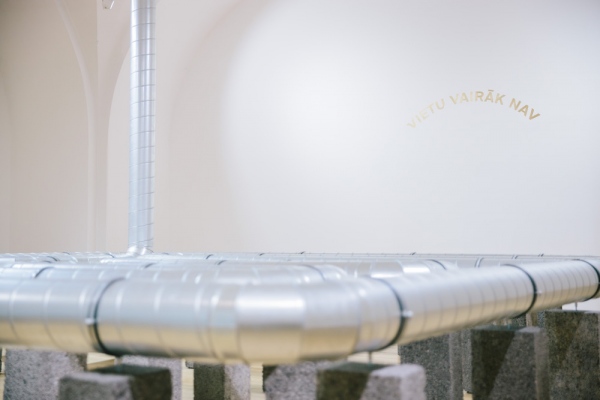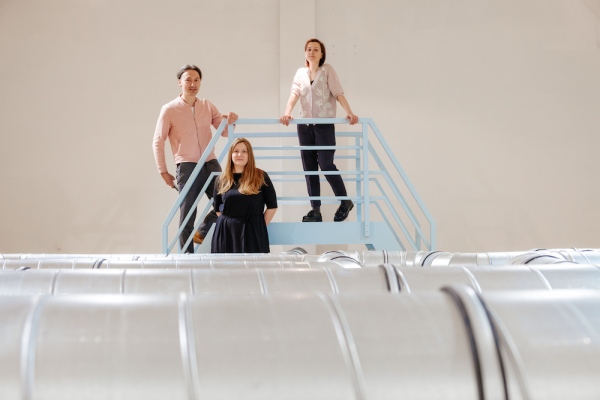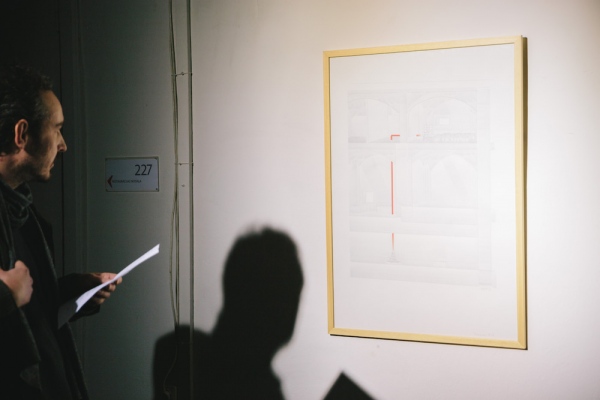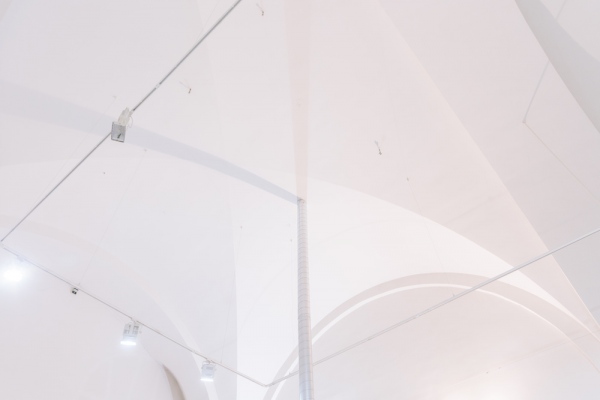No More Places
2019
In early 21st century America, a computer game titled Pipe Mania was created. With the appearance of the first mobile phones, it was, along with Minesweeper and Snake, one of the most exciting ways of spending time in the digital environment. The aim of the game was to join various pipe parts, in order to ensure the safe passage of water through the labyrinth. But, just like in any game, there is a certain element of difficulty – in Pipe Mania it was the time limit during which the right choices had to be made to avoid a leakage. Brigita Zelča-Aispure and Kristaps Grundšteins' installation resembles a game board where the artists question (?), call out (!) or note (.) situations where there are no more places. There are no more places left on the plane, no free places left for the performance, no places left at the preschool educational institution, no place left on the hard disk, no state-funded places left at the university. And so on – from frightful online news, establishment of facts, announcements on displays in the bus, to workplaces for spending life comfortably. The authors of the exhibition ask the question: “What to do when no places seem to be left? It may be beneficial for some, but the majority of society must deal with the situation of fitting into structures that are already closed.”
At the center of the exhibition is an installation, which literally takes over the entire ARSENALS building, thus turning the institution and its processes into a part of the work. For Brigita Zelča-Aispure and Kristaps Grundšteins' work, not only the building's architecture is important, but also its historical context and significance in the development of Latvian art, the materials of which it is made as well as the building's structural elements. The ARSENALS Exhibition Hall of the Latvian National Museum of Art is part of Vecrīga's Northern Gate ensemble. And, despite the fact that this is one of the architecturally most spacious buildings in Riga, here too there is no place left – there is not enough place to keep the collections of art and every square centimeter is being used. Thus, 4 166 works from the collection of painting are kept in 359 m2, yet while place is still somehow found for painting, sculpture and graphic art, the situation with contemporary art is more complicated. The storage and conservation of installations is a problem faced by art institutions in Latvia as well as abroad. The absence of the Latvian Museum of Contemporary Art not only contributes to artists being "lost in translation", but also poses the question – what to do with site-specific works of art after the exhibition, when there is no more place?

